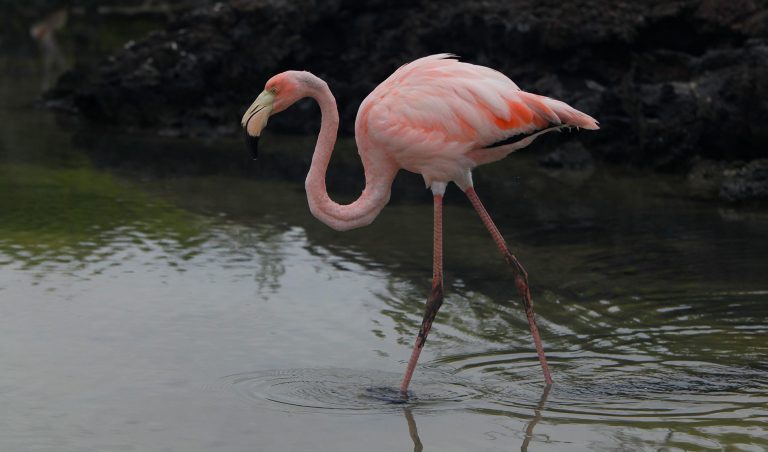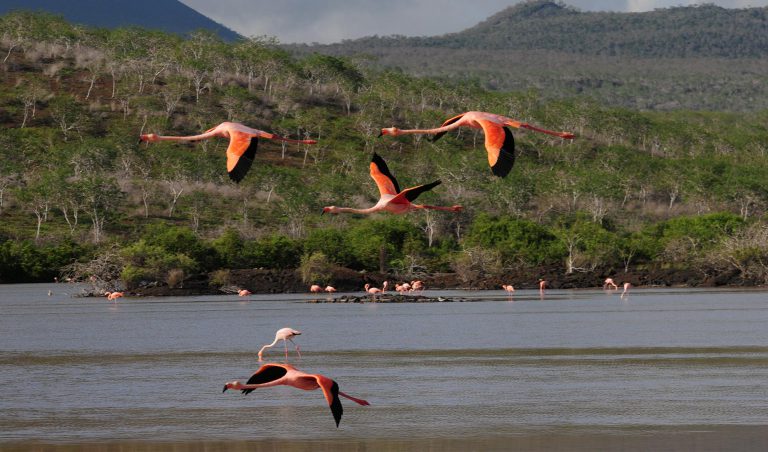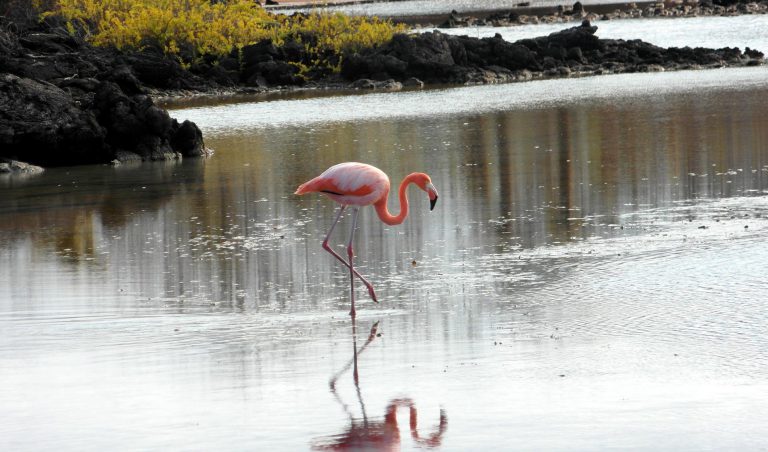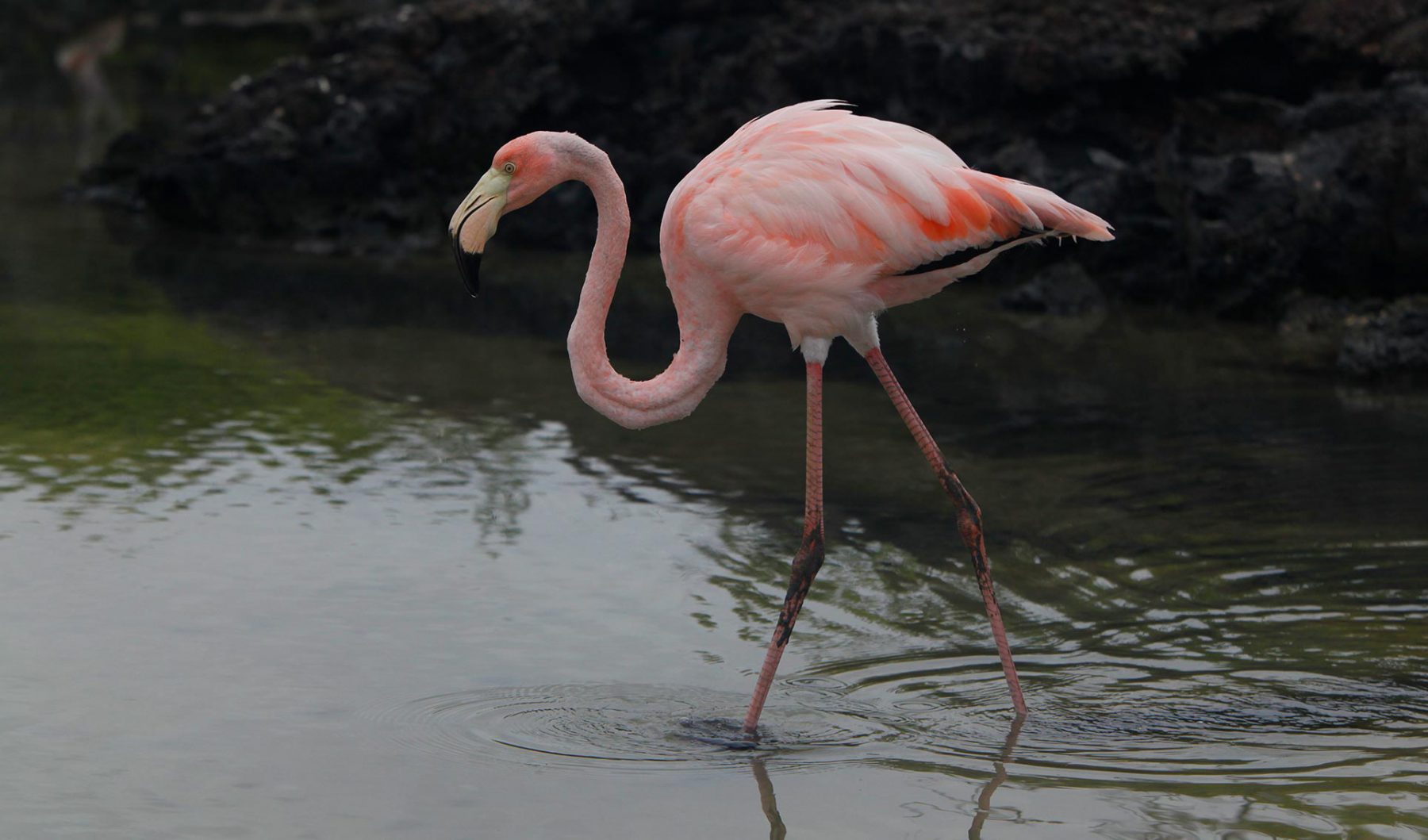
More about Galapagos Flamingo
The Galapagos flamingo is a large species of flamingo closely related to the greater and Chilean flamingo. It was formerly considered conspecific with the greater flamingo, but that treatment is now widely viewed as incorrect (for example, by the American and British Ornithologists’ Union) due to a lack of evidence.
It is also known as the Caribbean flamingo, inhabitants of salty lakes where they can find their food between the mud with their special curved beaks. Their plumage is pink thanks to their shrimp diet which is high in carotenoids. The more shrimp they eat, the pinker they become, having some specimens a paler tone.
They reproduce all year long by not having a specific mating season. Their nest is built high up on mud walls or columns in order to protect the egg from floods that may occur on the ground. Both parents take care of the egg, which will hatch in about 35 days and is born with gray to white plumage. Chicks are fed with pigeon-like milk containing prolactin that is high in nutrients and red and white cells until they can feed on solids.
A flamingo lifespan can reach up to 50 years.
Places where you may see this animal:
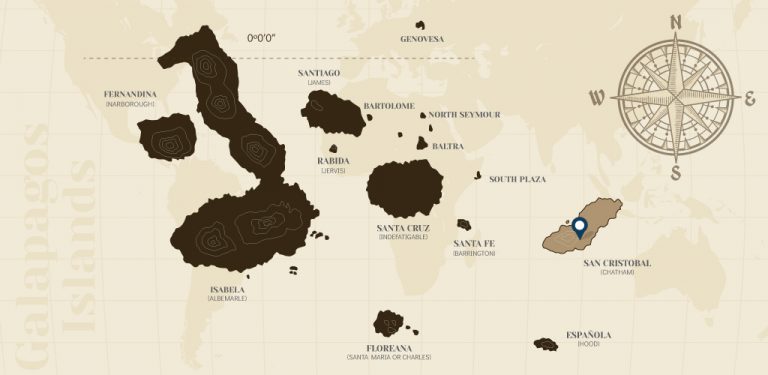
- Animal Group: Landbirds
- Scientific Name: Phoenicopterus ruber
- Animal Average Size: 120 - 145 cm
- Animal Average Weight: 2.2 - 2.8 kg
Galapagos Animals
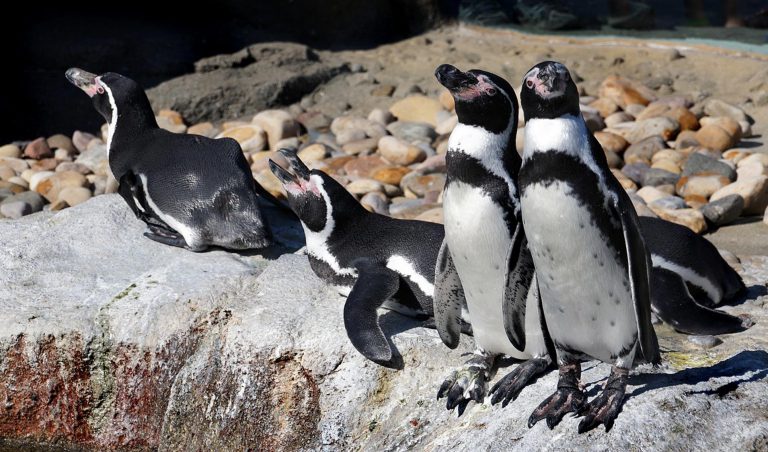
Galapagos Penguin
View more
Waved Albatross
View more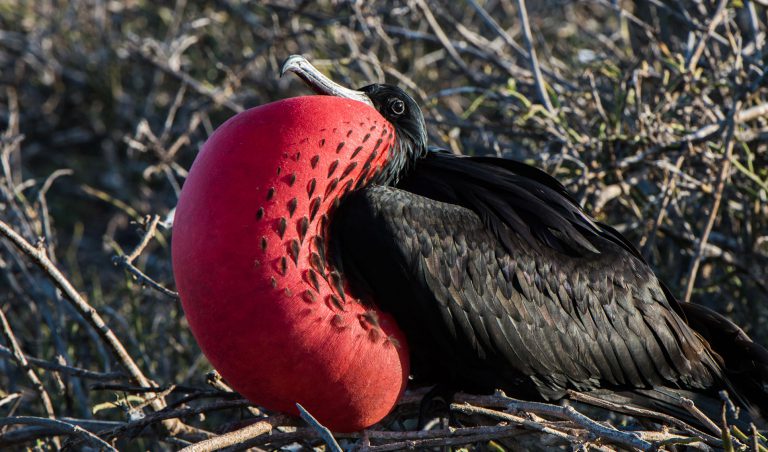
Frigatebird
View more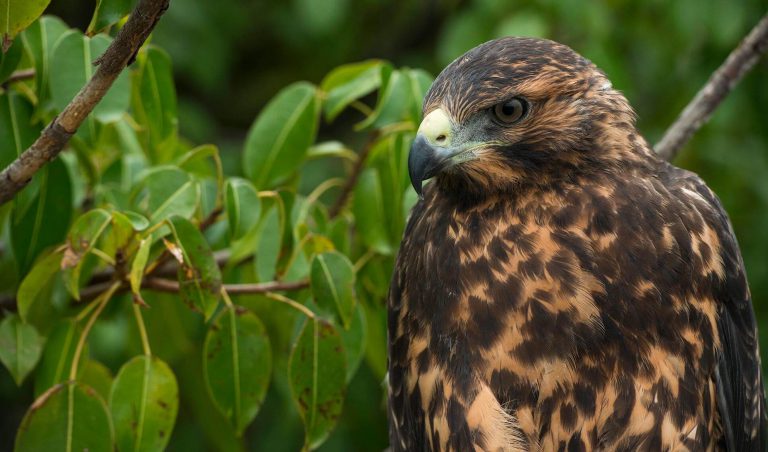
Galapagos Hawk
View more
Galapagos Barn Owl
View more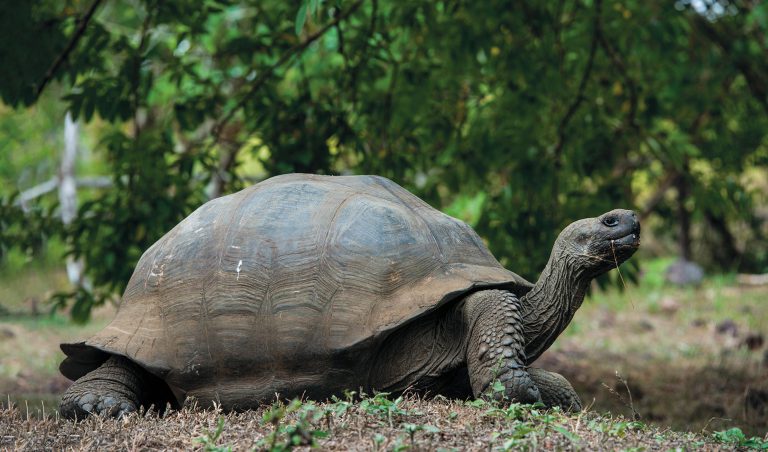
Giant Tortoise - Lonesome George
View more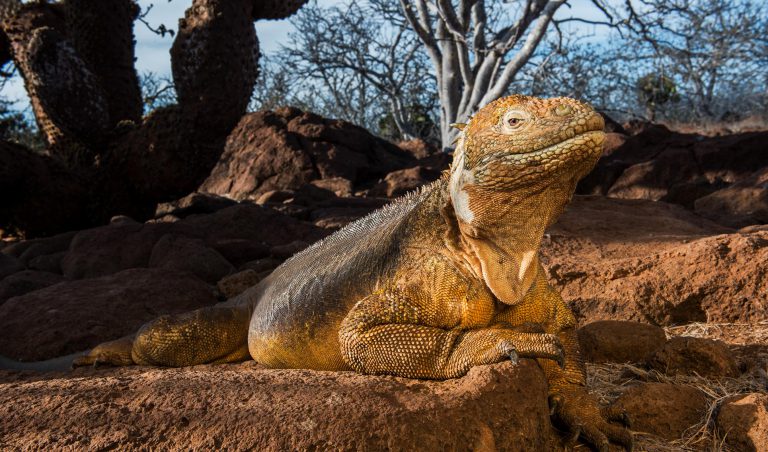
Land Iguana
View more
Whales
View more
Red-Footed Booby
View more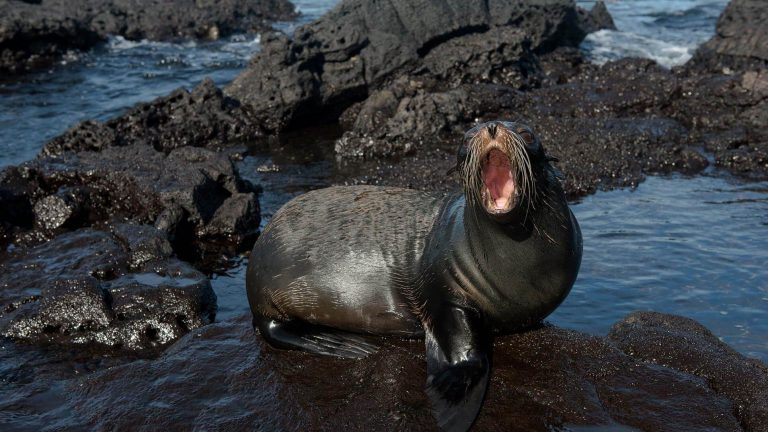
Fur Seal
View more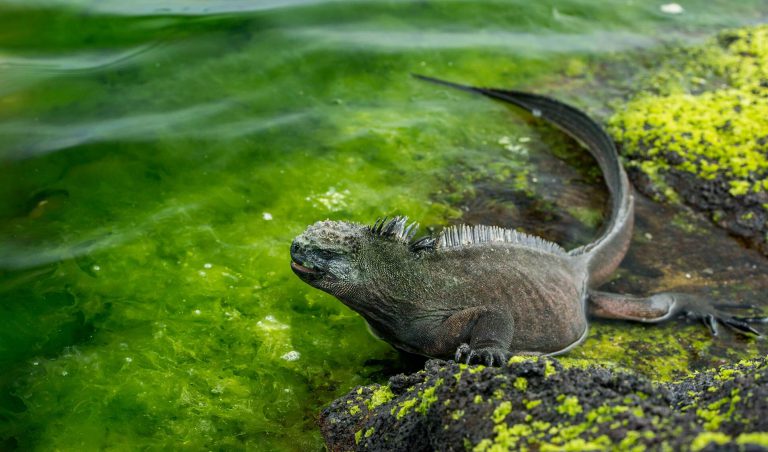
Marine Iguana
View more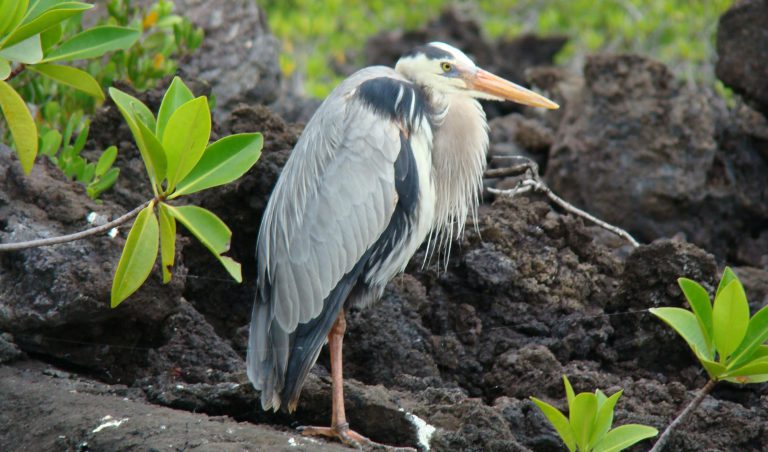
Great Blue Heron
View more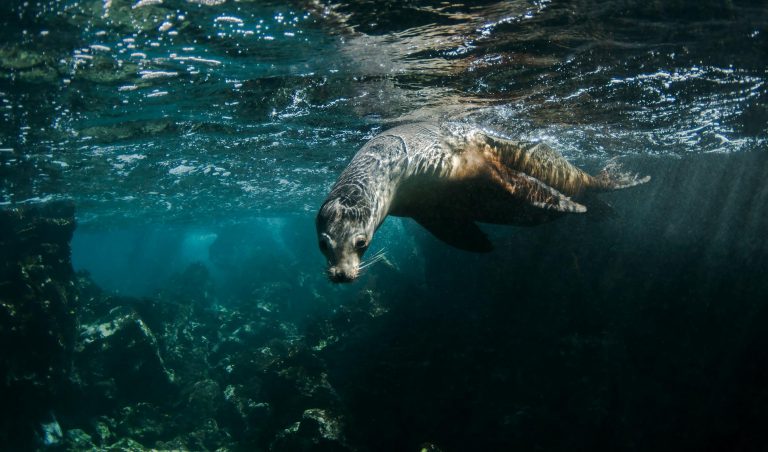
Sea Lion
View more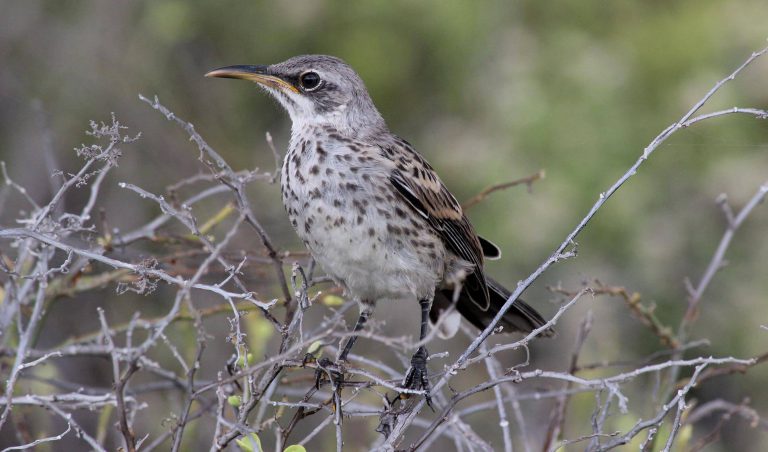
Mockingbird
View more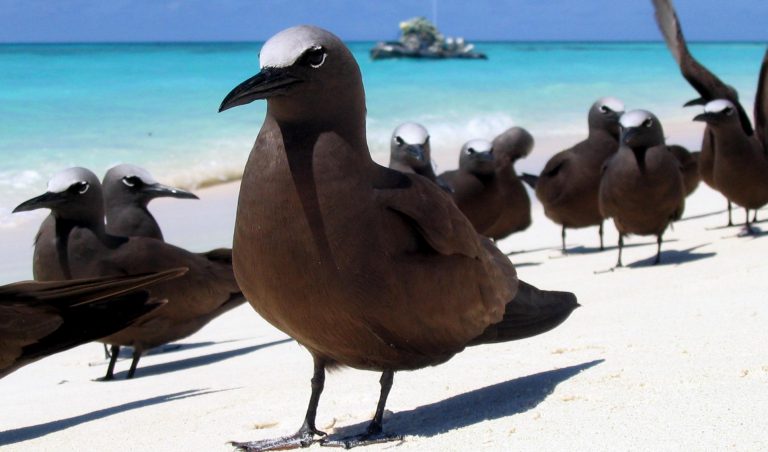
Brown Noddy Tern
View more
Stingrays
View more
Lava Heron
View more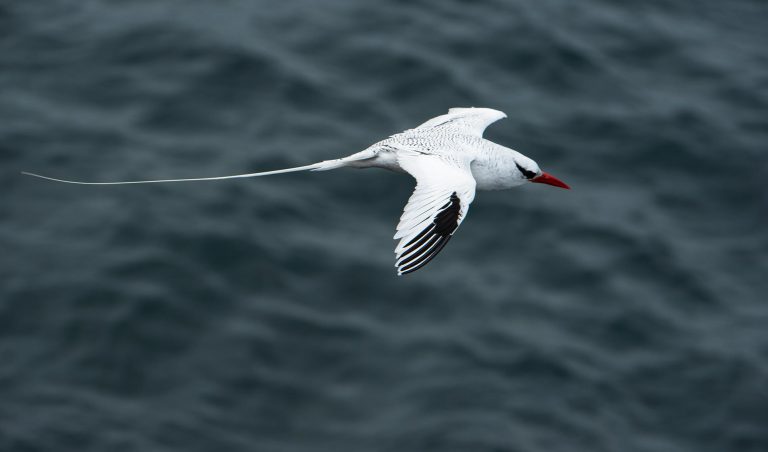
Red-Billed Tropicbird
View more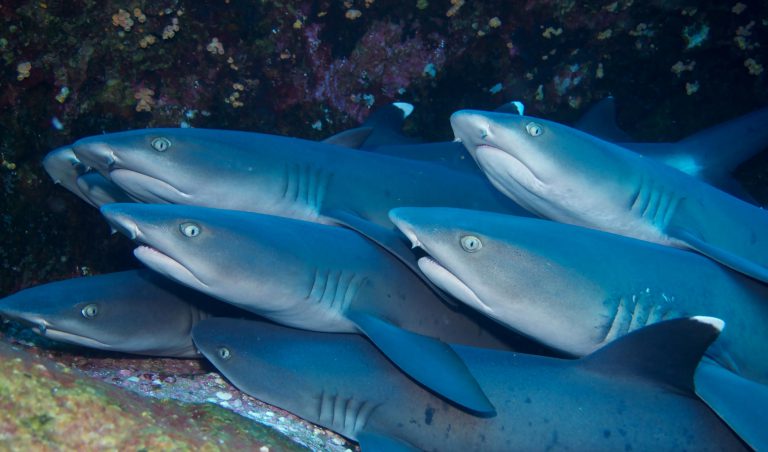
Whitetip Reef Shark
View more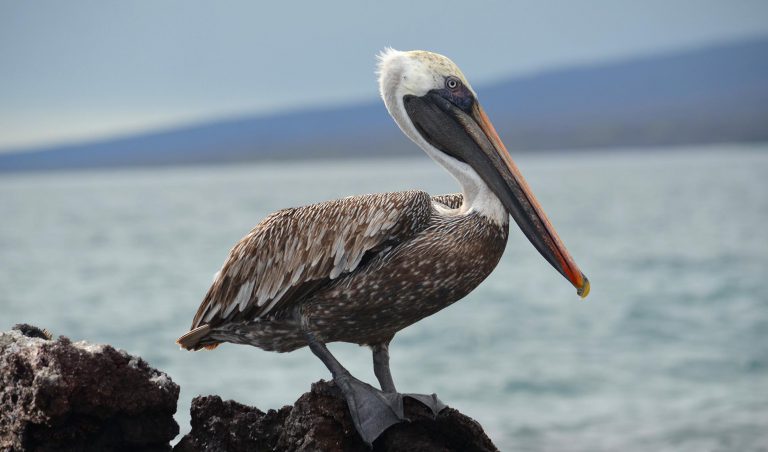
Galapagos Brown Pelican
View more
Darwin Finches
View more
American Oystercatcher
View more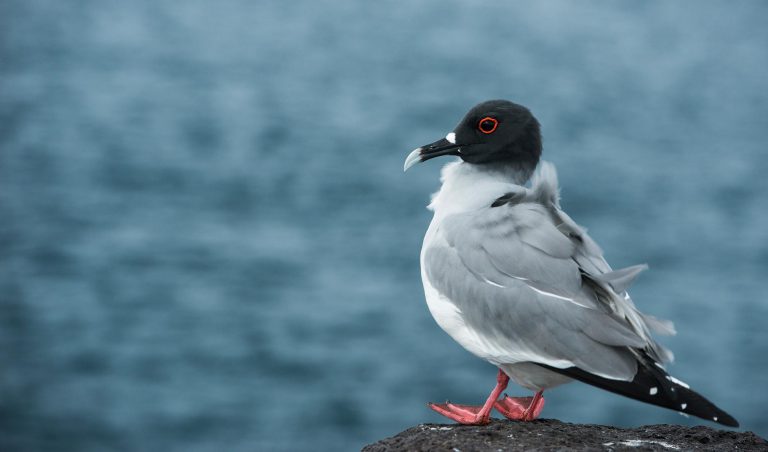
Swallow-Tailed Gull
View more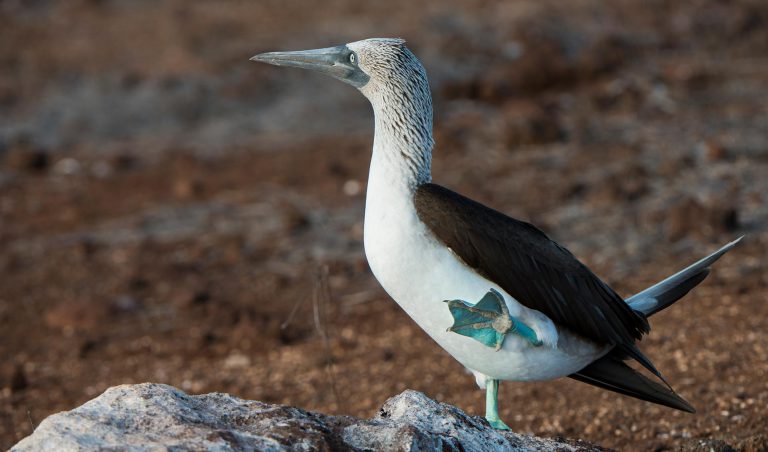
Blue-Footed Booby
View more
Yellow Warbler
View more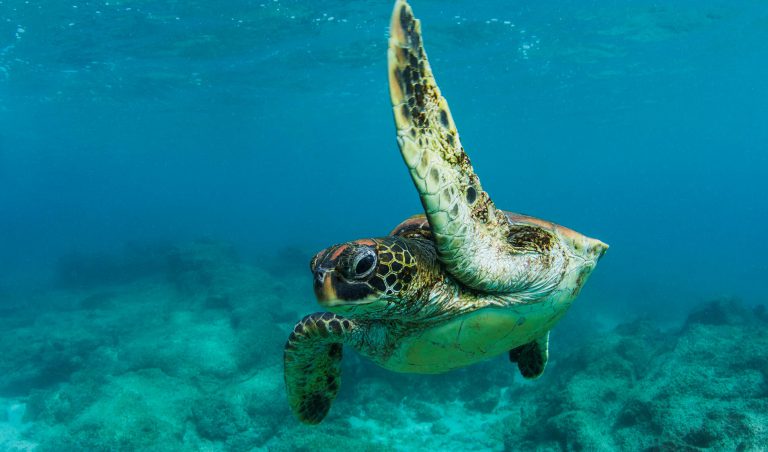
Galapagos Green Sea Turtle
View more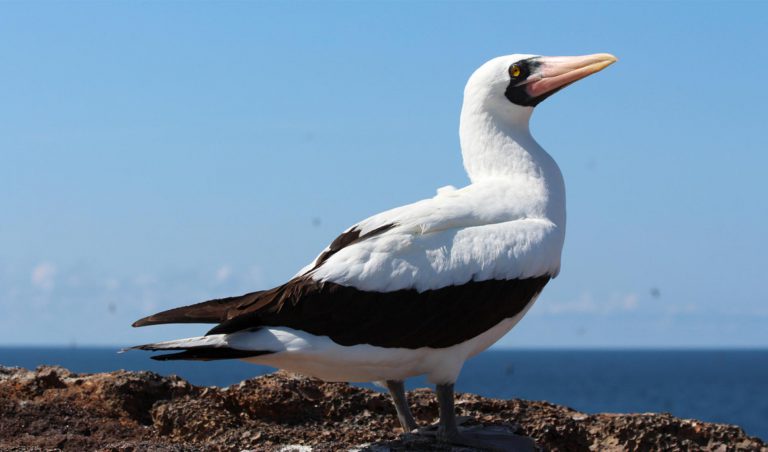
Nazca Booby
View more
Dolphins
View more
